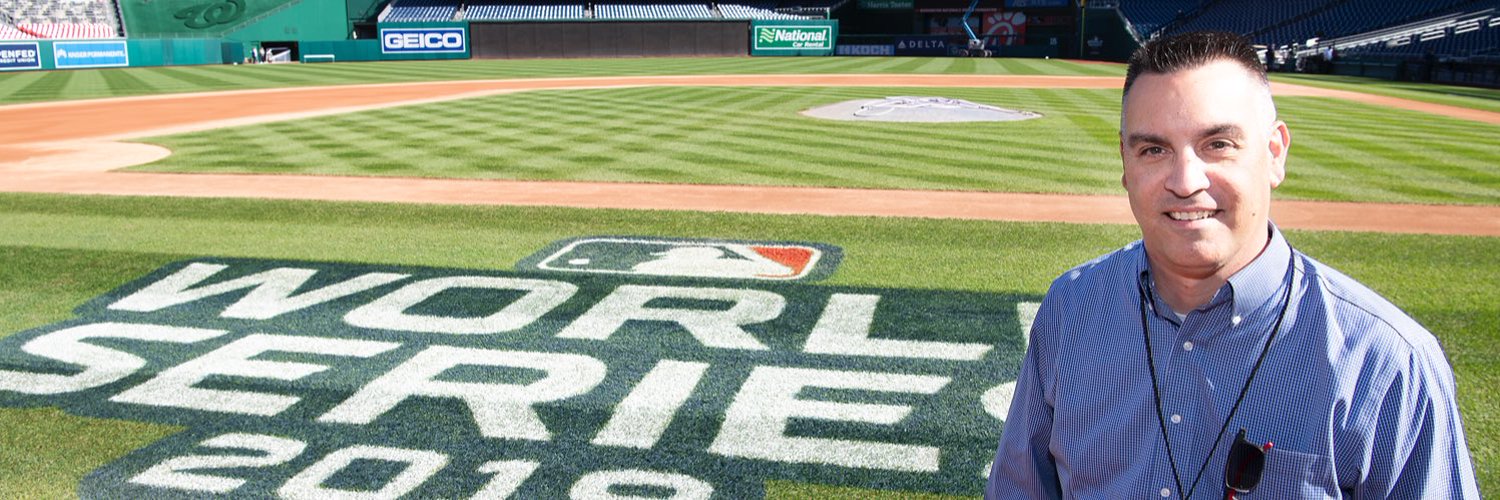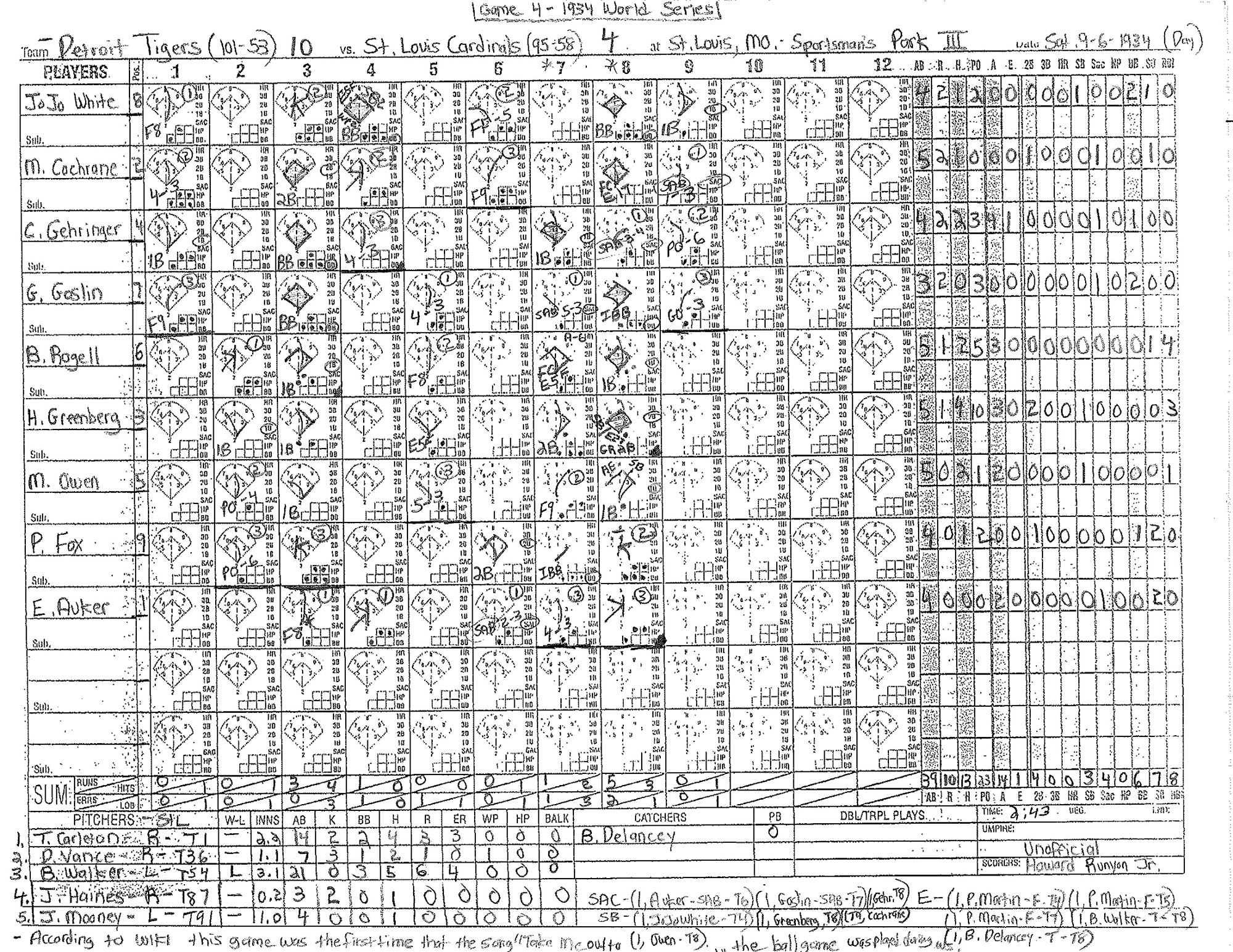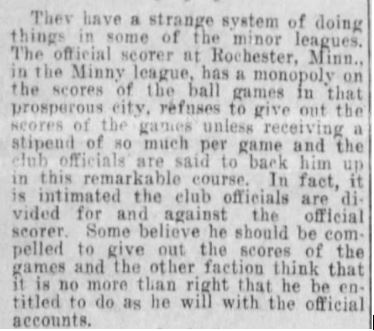SABR Official Scoring Committee: May 2020 newsletter
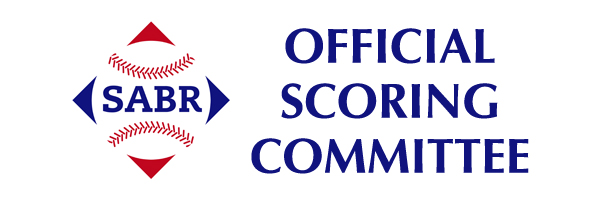
“You Called That a What . . . ?”
The Newsletter of the Official Scoring Committee
Society for American Baseball Research (SABR)
April-May-June (Daisy Duck Family Edition) 2020, Volume 5, Number 2
Editor:
Stew Thornley
- From the Co-Chairs
- Conundrum of the Month (or Quarter or Whatever)
- Profile: Dennis Hetrick
- Guest Column: Sarah Johnson
- Bloops and Bobbles
- Conundrum Answer
- Quote of the Year
- Honchos
From the Co-Chairs
Hi folks. I (Stew) am happy to have Chris Phillips join our committee as co-chair. You may be familiar with Chris as he gave a presentation at the SABR 49 convention in San Diego last summer on official scoring, and you may have (if not, you must) read his book, Scouting and Scoring: How We Know What We Know about Baseball. It was recently announced that Scouting and Scoring is a recipient of the 2020 SABR Baseball Research Awards, which honor outstanding research projects completed during the preceding calendar year that have significantly expanded our knowledge or understanding of baseball. You can read more about Chris and his book in the June 2019 issue of the Official Scoring Committee newsletter.
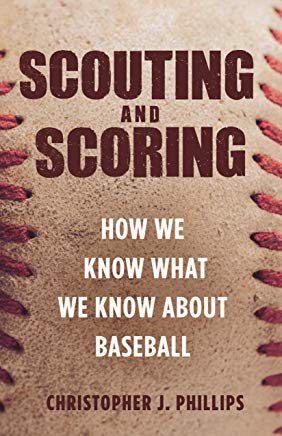 And now, without further doo-doo, here’s Chris:
And now, without further doo-doo, here’s Chris:
“I am pleased to be joining Stew Thornley as co-chair of the Official Scoring Committee, and want to thank him for extending the invitation. We certainly share the belief that official scorers are some of the central but often misunderstood or forgotten figures in the history of baseball’s statistical record.
“Unlike Stew, I’m not an official scorer—or at least haven’t been one at a level above little league’but my interest in the topic was first kindled by my research into the history of scoring. I’m trained as a historian of science and math (I teach at Carnegie Mellon University) and when I started work on my book, Scouting and Scoring, I realized that the history of data in baseball was a story that centered around the history of official scorers. From their training and recruitment to questions about how to best handle complaints and disputed calls, the history of official scoring is essential to the history of statistics and data anlaysis in baseball. While doing this research, I relied, in fact, on oral histories and other material from the Official Scoring Committee.
“While working with this committee, I’m of course interested in continuing to document the history of official scorers, through interviews and the collection of other archival material. I’m also interested in continuing Stew’s work generating interest in official scorers and publicizing their contributions, perhaps through additional profiles or accounts of shadowing scorers, through updates on rule changes and controversies, and perhaps through the inclusion of more video material and links so committee members can engage from afar. One of the questions I’m always asked when talking about my book is about how technology will affect the future of scoring, and there might be ways to engage with that question and document how current scorers see their work changing over time.
“Most importantly, I look forward to engaging with you electronically and—hopefully—in person before too long. With the SABR convention for 2020 postponed by a year, we have some time to plan for that as well.”
Conundrum of the Month (or Quarter or Whatever)
Situation: Runners on first and third with one out. The batter puts down a bunt and is thrown out at first. The runner at first advances to second, but the runner on third holds. It’s clear that the objective, with one out (not normally a sacrifice situation), was to get the runner home from third, which the batter failed to do. Does he get credited with a sacrifice?
Dennis Hetrick is a SABR member and an official scorer for Washington Nationals home games. He is one of a handful of SABR members who is a Major League Baseball (MLB) official scorer (Rodney Johnson and Richard Musterer being among the others). Dennis was to be a speaker at our SABR convention in Baltimore this July. With coronavirus postponing our convention for a year, we’ll have to wait until 2021 to hear from him live. Meanwhile, enjoy his answers to some questions.
How did you get into official scoring?
One of my former American Legion coaches George Richardson was a long time official scorer for the Frederick Keys in the Carolina League. It was 2003 and I was living in Frederick at the time with my wife. Whenever I went to a Keys game I would stop in the press box to say hi. During this visit he mentioned that he needed another scorer to help him split the games that year. I said, “You could teach me how to do it. ” So he did, and he mentored me for a few years as I went through my trials and tribulations of becoming a scorer.
Then he moved away, and I kept doing it. I found that I really loved it. It didn’t feel like work. I remember walking into the park one Sunday afternoon with the sun shining, as the groundskeepers were watering down the infield. I could smell the grass as I walked on the concourse towards the press box. I noticed some fans were trickling into the stadium. I whispered to myself, “This is where I belong. ”
What interesting situations have you encountered while scoring?
I was scoring a game that was a blowout late, so a team used a position player to pitch. He balked twice during the inning and it seemed like he balked a third time, but it was on a pitch that was ball 4. I was unsure how to correctly score that. So I asked the umpires after the game, and they told me that the third (balk) was not a balk. They said since it was ball 4 anyway, that the same result happened and the walk takes precedence, so it is officially a walk. I didn’t know that, but learned it that night. So the player (pitcher) only balked twice.
Another one would be a defensive indifference/stolen base decision. I saw a play that I had never seen before. Runner on first, not being held on because the score was a blowout. The runner takes off towards second base assuming the defense is letting him take the base. But the catcher, after receiving the pitch fires to second and the shortstop covers the bag, takes the throw, puts the tag down, and the runner is barely safe. Everyone in the press box looks at me. Is that a SB or a DI? I originally rule SB thinking that the defense tried to make a play on the runner. How could that be a DI? I went over the rule book and the MLB case book. After much thought, and advice received from my OS brethren, I changed the call to DI because the runner was not being held on at first base. The team that was on offense was not happy, but in the final analysis, the first baseman not holding the runner was the biggest factor. However, if the runner would have been tagged out, he would not have been charged with a caught stealing, either. I realized later that this was kind of a sneaky play that the manager had up his sleeve to get an out by surprising the runner. So if he wasn’t running hard, he might be thrown out, thus helping the defense and the pitcher. This situation put the scorer in a tough position, but I learned about a situation that I had never seen before.
What advice do you have for people interested in official scoring?
Try to get in with a local college, or even amateur team, who might be looking for a scorer. If you live near a minor league team, ask if you can shadow a scorer for a few games, and then see if you can fill in for them when they can’t make it to a game. My experience is that there are almost always conflicts that cause a minor league team to need multiple scorers in a rotation. If you can get a shot and do a good job, you might be in the regular rotation by the next season, or even sooner. I would say that scoring in the minor leagues is the best training that you can get.
Anything else?
One thing that I believe has helped me, is that I never want to feel like I have seen it all or that I know everything there is to know about scoring. First of all because it is just not true, but more importantly it is a mindset of always trying to get better, and learn more about the game and scoring it. I am absolutely sure that this game will humble me if I get too sure of myself or think that I know everything.
Guest Column: Sarah Johnson
Rangers-Red Sox Official Scoring Ruling
“It was a normal game up until that point . . . ” A lot of official scorers have uttered these words as a precursor to describing a crazy situation unfolding during a baseball game. Greg Porzucek, official scorer for the Rangers-Red Sox game at Globe Life Park on September 26, 2019, recently talked about an unusual play in the top of the ninth inning.
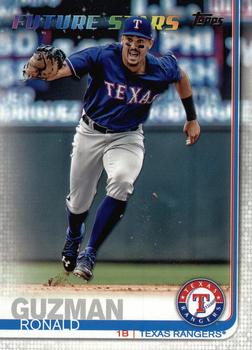 Both teams were out of playoff contention for this Thursday afternoon series finale, and the Rangers had All-Star Mike Minor on the mound making his last start of the season. Despite it being a hot and humid day and having already thrown 120 pitches, Minor was back out for the top of the ninth inning with the Rangers leading 7-5. After Red Sox first baseman Sandy Leon flied out to left field, shortstop Chris Owings worked to a 1-and-1 count and hit a foul pop between home plate and first base, an easy play for either Rangers catcher Jose Trevino or first baseman Ronald Guzman. Out #2 right? After initially charging the ball, Guzman allowed it to land safely in foul territory for the second strike on Owings.
Both teams were out of playoff contention for this Thursday afternoon series finale, and the Rangers had All-Star Mike Minor on the mound making his last start of the season. Despite it being a hot and humid day and having already thrown 120 pitches, Minor was back out for the top of the ninth inning with the Rangers leading 7-5. After Red Sox first baseman Sandy Leon flied out to left field, shortstop Chris Owings worked to a 1-and-1 count and hit a foul pop between home plate and first base, an easy play for either Rangers catcher Jose Trevino or first baseman Ronald Guzman. Out #2 right? After initially charging the ball, Guzman allowed it to land safely in foul territory for the second strike on Owings.
Why would Guzman allow a ball to intentionally drop in the ninth inning of a two-run game? Because he was doing it on instruction from his pitcher, who was one strikeout away from reaching 200 on the season. So, as an official scorer, how do you score such a play?
“I don’t read the game notes so I wasn’t aware of Minor going for that milestone early in the game,” said Porzucek. “But late in the game you do expect them to turn it over to the bullpen, and someone mentioned in the eighth inning that Minor was still in because he was going for 200 strikeouts on the season. When I saw that ball drop in the ninth my first thought was, ‘Oh, geez.’ So I started running through the rules for such a play. There is rule about not charging an error if there is a runner on third so as to not let them score, but that didn’t apply in this situation. You don’t charge an error for a fielder’s mental mistake—could that apply in this situation? I initially called it ‘no play’ and told the Gameday stringer that I would be looking at that after the game.”
With new life in the at bat, Minor got Owings on a called third strike on the next pitch to reach strikeout #200. Rangers manager Chris Woodward then brought in relief pitcher Jose LeClerc, who retired second baseman Marco Hernandez for the last out of the game. “Shortly after the game ended, I heard one of the Red Sox broadcasters asking who the official scorer was. I told him I was and he said he was disturbed that a play like that would be allowed to happen,” said Porzucek.
“I reviewed that play and reached out to our contact at Elias [Sports Bureau] to ask if there was any reason I couldn’t call an error. They said no so I went ahead and changed it to an E-3. I didn’t hear anything about it from anyone with the Rangers. But I sent this to our boss at MLB so we could take a look at this play at our official scorers meeting in New York. It worked out fine in this scenario but it was still close at that point—the Red Sox had the top of the order coming up so it could have gone differently. What do you say if something like that causes you to lose the game?”
Bloops and Bobbles
The June 2019 newsletter had an item on Southern League official scorer Howard Runyon’s hobby of keeping score of games from old radio broadcasts, which are available from Classic Baseball Radio Broadcasts. Here is a page from Howard’s scoresheet of the fourth game of the 1934 World Series:
Click on the image to enlarge; click a second time to enlarge more.
Home Run but No Run
Making the rounds lately is the story of Bengie Molina hitting a home run but not scoring a run. Jayson Stark covered this in The Athletic on April 16, 2020 (you will need a subscription to read the entire article): Stark’s Strange but True Files: The Home Run that Broke Baseball-Reference.
In the bottom of the sixth of a Los Angeles Dodgers at San Francisco game September 28, 2008 Molina hit a long fly to right that was ruled in play. Molina stopped at first with a single. Emmanuel Burriss entered as a pinch-runner. The Giants challenged the decision (video reviews on home runs began during the 2008 season), and the call was changed to a home run. Molina wasn’t allowed to re-enter, and Burriss completed the trot and was credited with the run.
Rules allow for a pinch-runner for an injured player in a dead-ball situation. The only cited instance of such an event came in the top of the fifth of a Boston at Toronto game September 14, 2005. Gabe Kapler was on first when Tony Graffanino homered. Kapler injured his leg after rounding second. Alejandro Machado ran for Kapler and got the run.
Has a player ever homered but not been able to complete the trek because of injury? Retrosheet founder Dave Smith says he and the late David Vincent scoured the records and could not find it ever happening. Knowing these guys, I’m confident in saying if they didn’t find it, it never happened.
Your trusty crusty editor remembers seeing a possibility of this in spring training, in a March 17, 1988 New York Yankees vs. Baltimore game at Bobby Maduro Miami Stadium. Leading off the top of the second, Jack Clark poled a high drive down the left-field line that cleared the fence just inside the foul pole. In his first few steps toward first base, Clark was injured (surprise!), tearing a tendon in his left calf. He was down for several minutes, and it looked like a runner might be needed. However, Clark got up and hobbled around the bases, walking the final 90 feet from third to home.
Baseball Dope by Fred R. Coburn
An official scorer in the Southern Minnesota League found a creative way to supplant his income, according to this item in the Minneapolis Tribune, Wednesday, May 18, 1910, page 13:
Scorer Summary for 2019
Chris Thoms, who is an official scorer for the the San Francisco Giants and Oakland Athletics in addition to supervising the official scorers in the Cape Cod League on the other side of the country, came up with a summary of games by official scorers in 2019.
Here are his stats:
Longest Game: 6:53, Gary Rausch, Arizona 3, St. Louis 2, (19 innings, 9/24/19)
Longest 9 Inning Game: 4:12, Bill Zavestoski, LAD 7, San Diego 6 (5/4/19)
Shortest Game: 1:31, Don Friske, Chicago 4, Toronto 1 (5 innings, 5/18/19)
Shortest 9 Inning Game: 1:59, Ron Jernick, Miami 3, Mets 0 (5/19/19)
Luckiest Scorers (Min 10 Games):
Adam Liberman (Cleveland): 2:47 average game time
Max Utsler (KC): 2:57 average game time
Jeff Lantz (TB): 2:57 average game time
Unluckiest Scorers (Min 10 Games):
Chris Johnson (LA): 3:35 average game time
Bob Ellis (Boston): 3:32 average game time
Chaz Scoggins (Boston): 3:28 average game time
Sacrifice in a Blowout
A member of the Halsey Hall SABR chapter inquired about an item by Edgar Munzel of the Chicago Sun-Times on page 21 of the December-January 1961 Baseball Digest. Munzel challenged a couple of scoring rules. One was the prohibition of giving an error for failure to put out a batter-runner with a bad throw on a double-play relay. Munzel added, “Just as absurd is awarding a sacrifice to a batter even though his team is behind 10-0, just because there happens to be a runner on first base when he lays down a bunt.”
The inquiring member asked about the scoring rules of the time. Not until 1967 was this added to the sacrifice rule: “Do not score a sacrifice bunt when, in the judgment of the scorer, the batter is bunting for a basehit and not solely for the purpose of advancing a runner or runners. Charge the batter with a time at bat. Note: in applying the rule always give the batter the benefit of the doubt.”
Perhaps Munzel had some influence in this addition even though his other contention, about not giving an error on a bad double-play relay (unless it caused additional advancement by a runner or runners), has not been changed.
Retrosheet Dave Smith again came through with examples. He wrote a program to check for sacrifices occurring with a differential of at least nine runs going back to 2010. He found six with a nine-run gap and one each with 10, 11, and 12 run differentials. The batters being credited with a sacrifice with a double-digit gap were John Maine, Jack Taschner, and Mike Broadway. No surprise: they are all pitchers.
Dave looked back some more, before the rule was amended and before Munzel wrote his piece, and found:
- 131 examples when the run differential was 10
- 81 when it was 11
- 51 when it was 12
- 21 when it was 13
- 12 when it was 14
- 10 when it was 15
- 2 when it was 16
- 2 when it was 17, and . . .
- 1 when the score differential was 21 runs.
Was it a pitcher who laid down a bunt with a 21-run lead? No, it was New York Giants third-baseman Heinie Groh, he of the bottle bat. In the first game of a doubleheader between the Giants and Boston Braves at the Polo Grounds September 10, 1924, the Giants led 22-1 in the last of the eighth with one out when Groh moved up the runners from second and first with a sacrifice. Frank Frisch followed with a bunt but was thrown out. Apparently, pitchers and teams weren’t as sensitive to such indignities by a team with a big lead back then.
An interesting situation in 2005: On September 14 the Twins played at Detroit and trailed 4-2 in the top of the ninth with Nick Punto on first and no out. Luis Rodriguez was credited with a sacrifice when he bunted and was thrown out at first with Punto advancing to second. Since Punto did not represent the tying run in a last-chance inning, this was not a sacrifice situation. So why was the sacrifice awarded? The reason Rodriguez bunted as he did—in a standard sacrifice manner rather than a drag bunt— was miscommunication between the Minnesota dugout, the third-base coach, and/or Rodriguez. Even though a sacrifice clearly didn’t make sense, Rodriguez was not bunting for a hit, and official scorer Chuck Klonke was correct in awarding the sacrifice.
And if you haven’t yet heard more than you ever wanted to hear about sacrifices, read on for this issue’s Conundrum answer about, what else, sacrifices.
Conundrum Answer
Yes. Rule 9.08(a) reads, “Score a sacrifice bunt when, before two are out, the batter advances one or more runners with a bunt and is put out at first base, or would have been put out except for a fielding error, unless, in the judgment of the official scorer, the batter was bunting exclusively for a base hit and not sacrificing his own chance of reaching first base for the purpose of advancing a runner or runners, in which case the official scorer shall charge the batter with a time at bat.”
Even if the batted failed in the goal to advance the runner from third, he was not bunting for a hit.
Two of these plays happened in the early years of Target Field. One was with one out in the top of the eighth of a Toronto at Minnesota game May 13, 2011. With Edwin Encarnacion on third and Rajai Davis on first, Yunel Escobar bunted and was thrown out at first with Davis but not Encarnacion advancing. Escobar, since he was not bunting for a hit, received a sacrifice. The other occurred with one out in the top of the second of a Milwaukee at Minnesota game June 6, 2012. With Rickie Weeks at third and Taylor Green at first, Martin Maldonado bunted and was tagged out by first baseman Justin Morneau. Green got to second but a timid Weeks held at third, even though he likely could have scored. Maldonado still got the sacrifice.
Quote of the Year
Bill Mathews, member of the Major League Baseball Official Scoring Advisory Committee:
It’s a neat occupation when everyone thinks they can do it, isn’t it?!?!?!!?
Honchos
Chris Phillips—(Co-Chair)
Stew Thornley—(Co-Chair and Newsletter Editor)
Marlene Vogelsang—(Vice Chair)
Gabriel Schechter—(Vice Chair)
Bill Nowlin—(Vice Chair)
Sarah Johnson—(Vice Chair)
John McMurray—(Vice Chair and Liaison to the Oral History Research Committee)
Art Mugalian—(Assistant to the Traveling Secretary)



